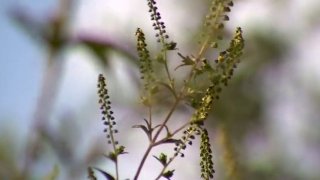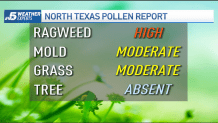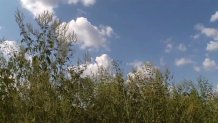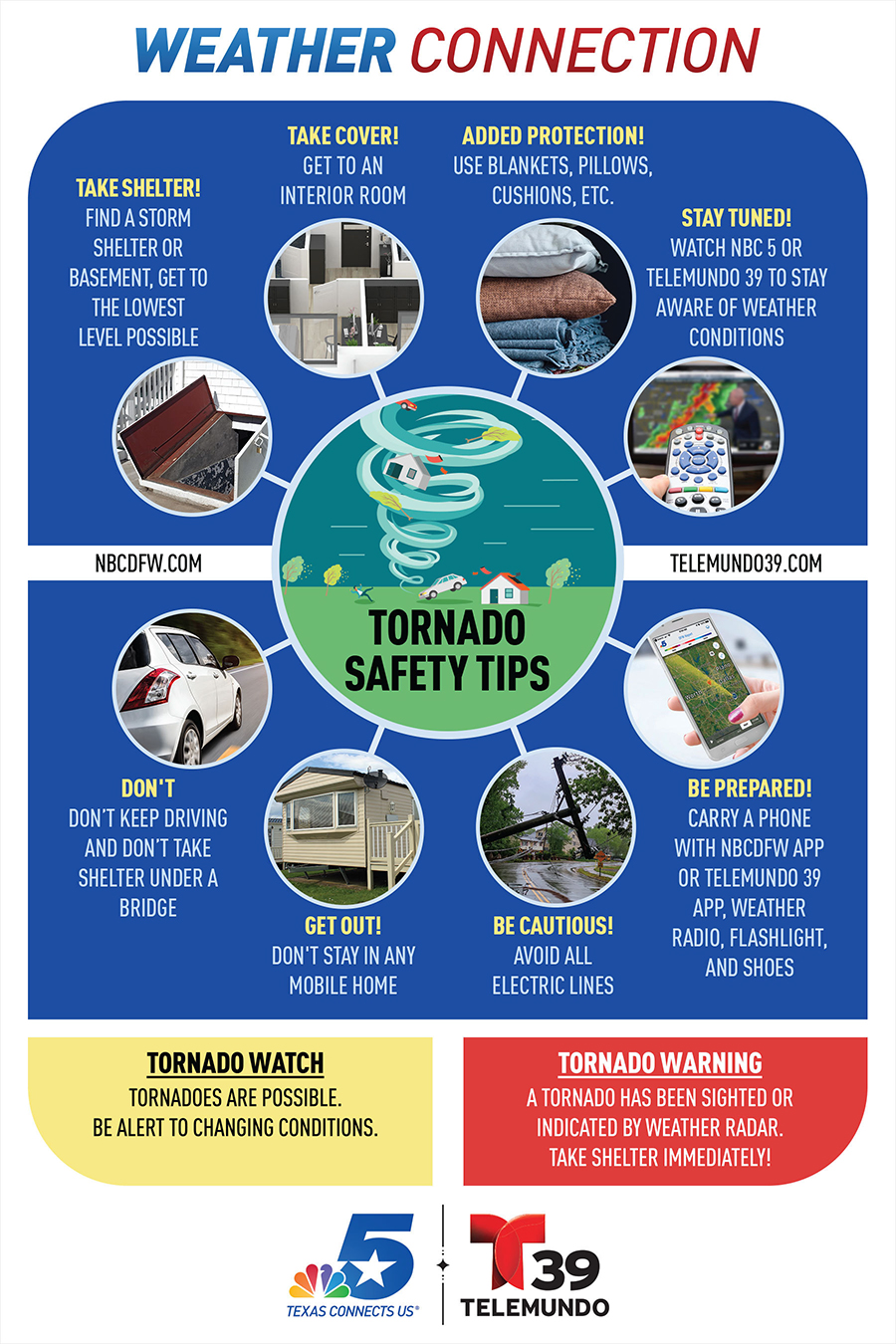
It's that time of year again when fall allergies begin to flare up. The main culprit: ragweed.
Often called "hay fever," ragweed is the "reason for the sneezin'" this time of year. It begins to make its annual appearance in North Texas in late August and sticks around until the first frost (late November). It typically peaks in mid-September.

WHAT DOES RAGWEED LOOK LIKE?
Get DFW local news, weather forecasts and entertainment stories to your inbox. Sign up for NBC DFW newsletters.
The ragweed plant is found all over Texas, though it's most common in the wide-open rangelands. The weed itself is a hearty, green stalk with yellow flowers and polyps of pollen. It thrives across dry, hot, and arid landscapes (where other vegetation may have difficulty growing). The yellowish pollen is easily airborne and dispersed by the Texas wind.
While the typical ragweed plant favors hot and dry weather, the giant ragweed or "great ragweed" plants (often exceeding 10 feet tall) are not likely to be as big this year. NBC 5 Senior Meteorologist David Finfrock explains, "The spring and summer drought means there are not nearly as many giant ragweed plants this fall compared to past years. Hopefully, that translates to lower pollen levels."
For the time being, the ragweed levels are ramping up as we approach the height of the season (mid/late September).

WHAT ARE THE RAGWEED ALLERGY SYMPTOMS?
Local
The latest news from around North Texas.
Ragweed symptoms include a runny nose, sneezing, congestion, headache, watery eyes, and scratchy throat. Coughing and wheezing can also accompany flare-ups. Due to its symptoms mirroring the common cold, it's important to see an allergist if symptoms persist for several days. Short-term relief can come from antihistamines, decongestants, and even steroid nasal sprays.
HOW DO YOU TREAT RAGWEED ALLERGIES?
For a longer-term remedy, allergy testing at a doctor's office can be administered to determine the best course for further treatment. Immunotherapy is a common option for the most severe cases. Treatment can be in the form of allergy shots, pills, or sublingual drops (under the tongue). All of these help to build the body's resistance to the ragweed pollen. These types of treatment, however, take several weeks to months to take effect.
WHAT CAN I DO TO REDUCE RAGWEED ALLERGY ISSUES?
In the meantime, some helpful tips include:
- limiting time outdoors when the pollen count is highest (usually in the morning during late summer and early fall).
- keep the windows closed
- change clothes after being outside
- shower before bed and wash hands after handling anything that's been outside.
WHAT TO AVOID WHILE SUFFERING FROM RAGWEED ALLERGIES
Believe it or not, experts even suggest avoiding certain types of food, too. Bananas, melons, zucchini, cucumbers, echinacea, and chamomile can have certain "cross-reactive" adverse effects connected to ragweed.
CONTINUING WEATHER COVERAGE
Stay up to date with the latest weather forecast from NBC 5's team of Weather Experts by clicking here or by watching the video below.

Be prepared for your day and week ahead. Sign up for our weather newsletter.



